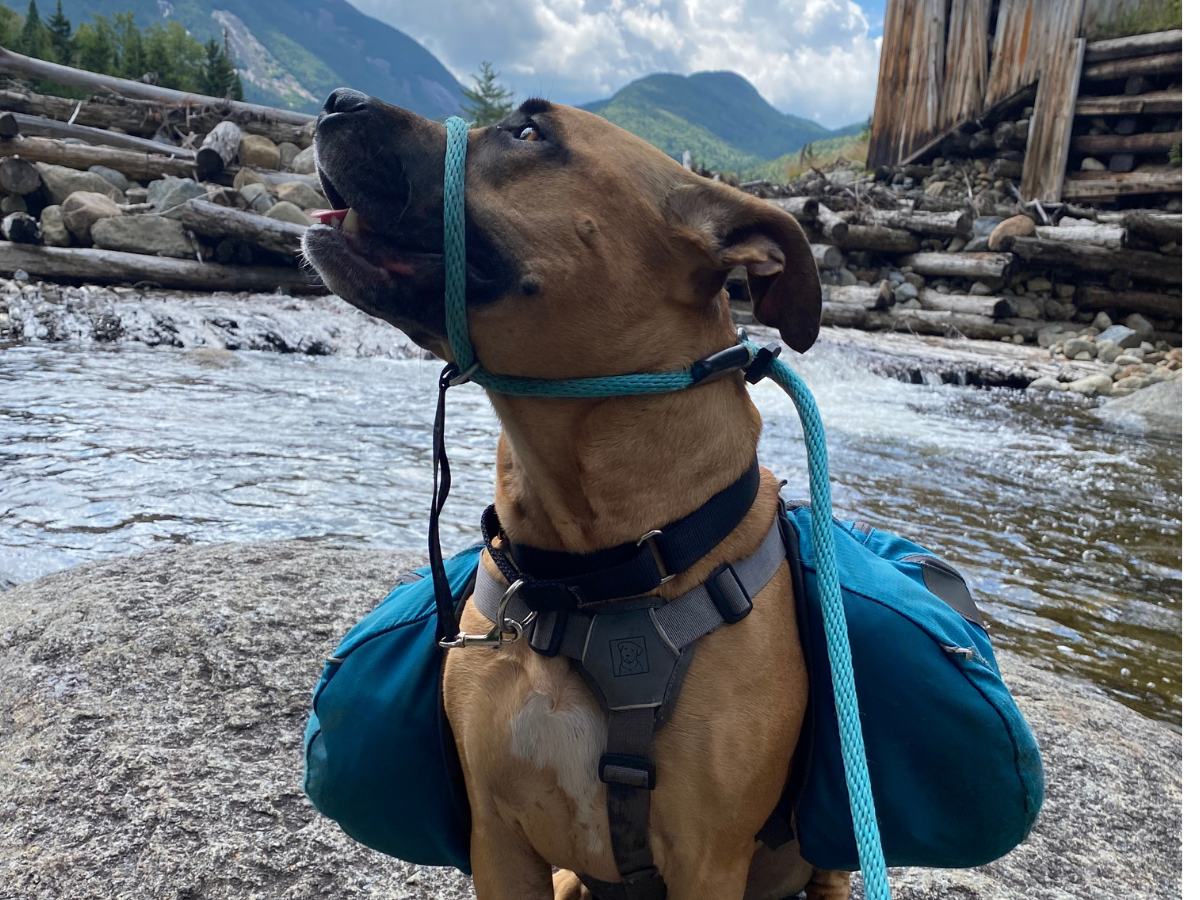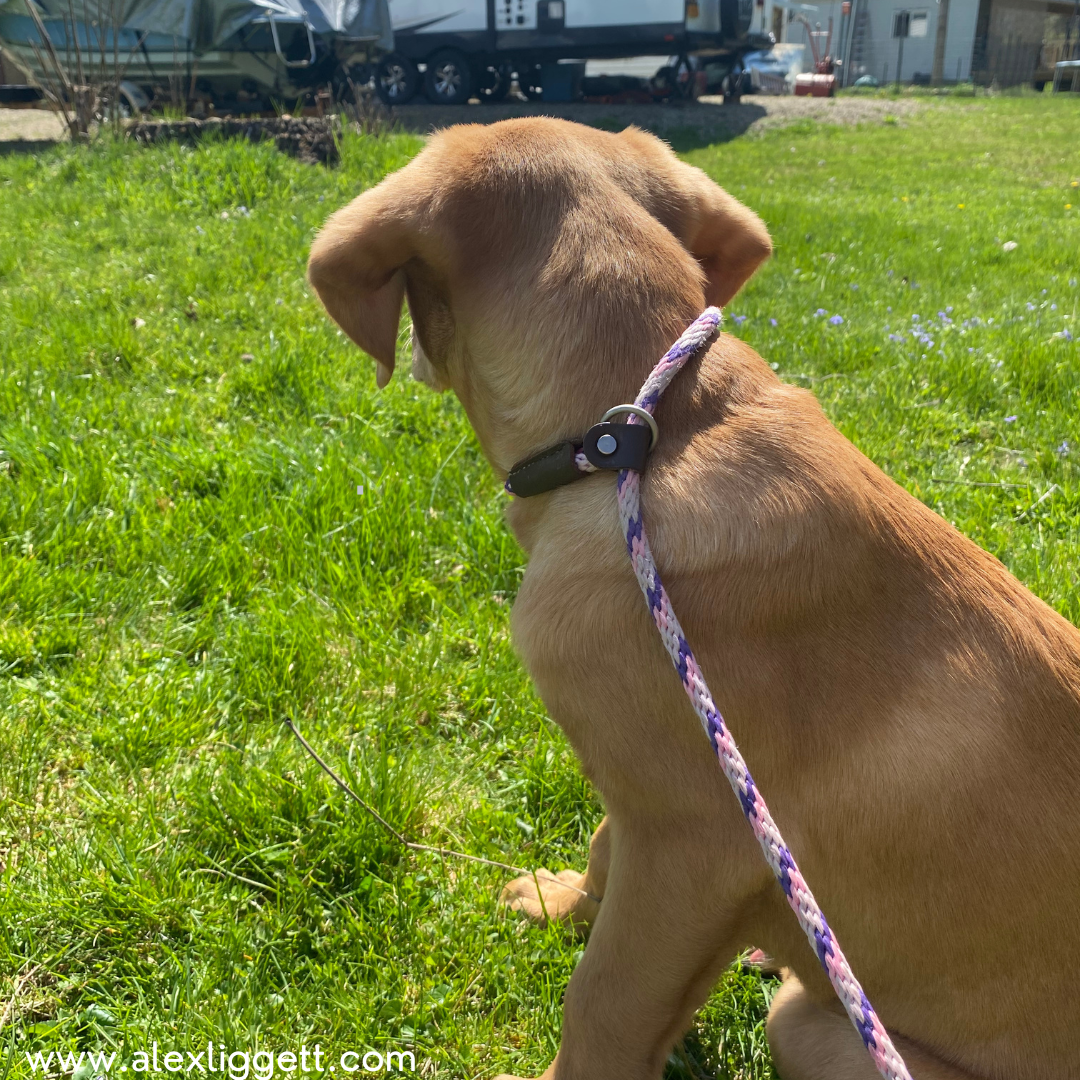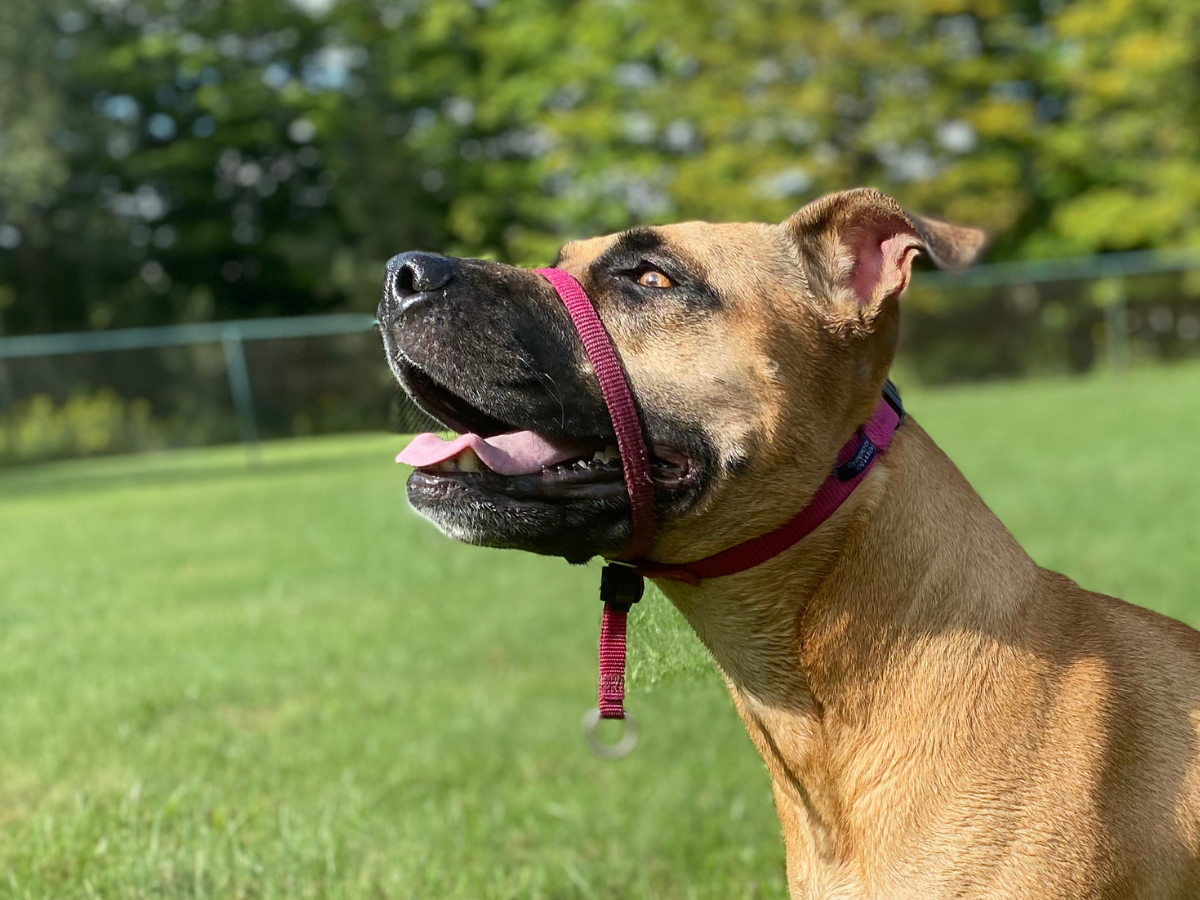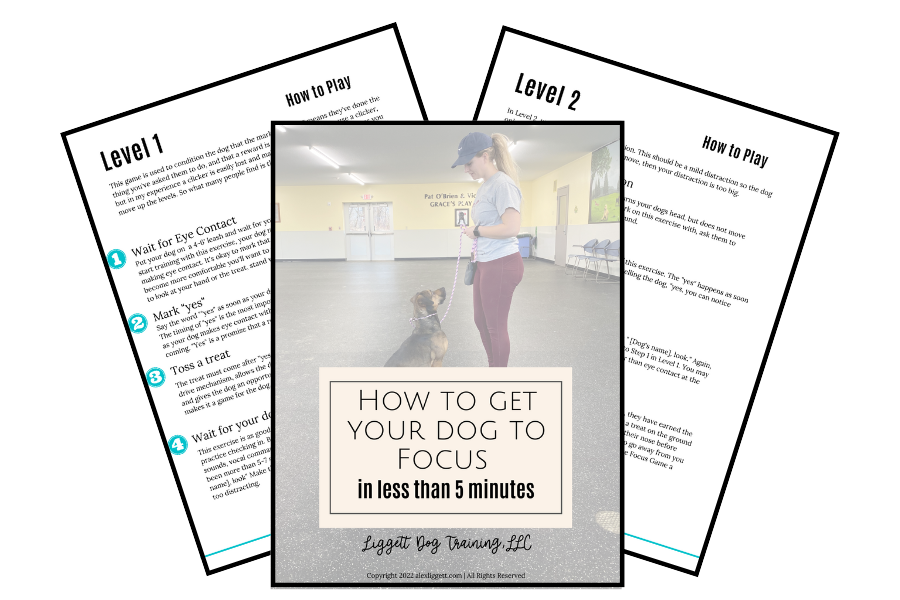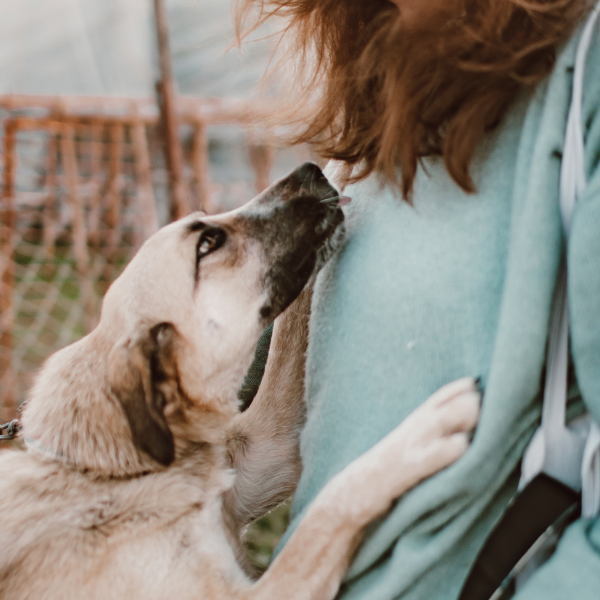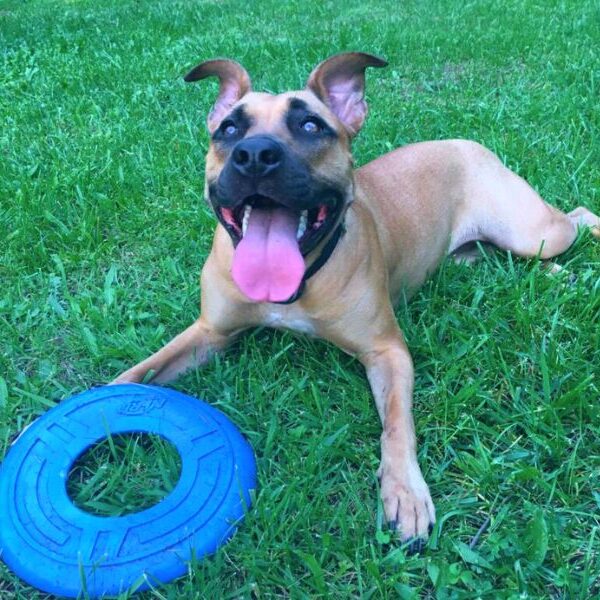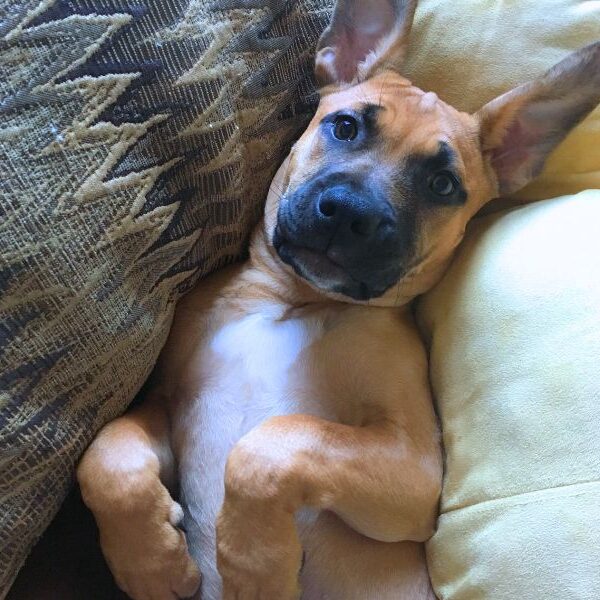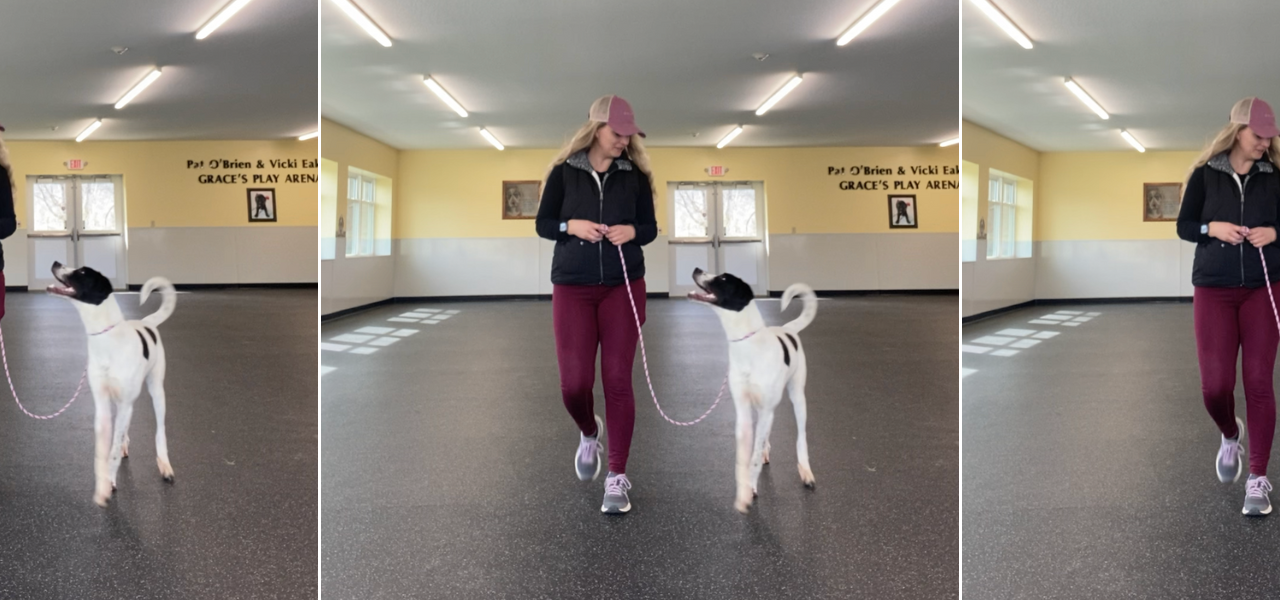
This post is all about how to train your dog to walk on a loose leash!
Enjoying a walk with your dog is one of the highlights of being a dog owner! But what happens when you start avoiding walking your dog at certain times to avoid certain triggers? Or reroute to other avenues if you see another person or dog coming? What do you do when you stop walking your dog because it just isn't enjoyable anymore?
If your dog is pulling on the leash you'll be able to regain some control in three simple steps!

Loose Leash
What is Loose Leash Walking?
The term loose leash walking is exactly what it sounds like! Depending on the dog owner or dog trainer this can look like anything from a strict heel to a dog that doesn't pull. The main idea of loose leash walking is that the dog respects and understands that the leash is a boundary.
When you teach your dog to loose leash walk it's important to assign a command to the behavior. Some common commands for a loose leash walk are "heel" "with me" and "let's go", but you can use your own!
Which side should my dog walk on?
It's up to you! Most people walk their dog on their left side so that their right hand is free to open doors, hold coffee, and shake hands with others. However, your dog can be trained to walk on either side. The most important part is being consistent about which side your dog is on.
How long does loose leash training take?
Some dogs grasp the concept of loose leash walking in a few minutes. Other dogs take years to develop the concept. A dog's success comes down to the dog's personality, former training and how skilled the owner or handler is at teaching the dog to respect the leash boundaries.
Will my dog enjoy loose leash walking? What's the point of being a dog if they can't have freedom?
Most dogs crave leadership from their owner. Think of it this way:
A dog is like a kid in a school. Consider walking your dog similar to being in the classroom with structured free time. The dog can pick from any of the given activities, but they still have to follow the rules. If they follow the rules during structured free time, then they'll be able to enjoy "recess", or time to sniff around the park, chase a frisbee, or meet other dogs in a safe environment.
Training a puppy for walks
Puppies love learning to walk on a loose leash! This can be such a fun activity. Puppies respond really well to luring. This means holding a treat right in front of their nose and luring them into the exact position you want them to be in, such as "heel". Puppies are quick learners and if they are food motivated will quickly learn to check in with you!
Loose Leash Walking Harness
Step 1: Ditch the Harness
Have you seen what huskies pull sleds in? If your dog is pulling and you're still using a harness, it's time to consider other tools.
A slip lead or transition leash is far more fair to a dog when used properly. These tools offer much more control over the head of the dog, and dogs tend to follow where their head goes.
Related: How to Use a Slip Leash
The idea of using a tool is to not have to use it. So if you find yourself using a tool often, it might be time to seek out the help of a dog trainer to teach proper technique.
A lot of dog owners start using a harness because it takes the pressure off the trachea so the dog doesn't choke themselves. This can be a concern for small dogs or dogs with history of collapsed tracheas.
It might be a good idea to consider something like a transition leash, or teaching a dog to give to the pressure of the harness.
Loose Leash Walking Tips
2. Bring Treats.
Yes, your dog should eventually listen to you without treats, but you might not be there yet. Make things easy for you and your dog by increasing YOUR value and rewarding your dog for giving you their focus.
Try not to get hung up too much about you sit, come or heel command, just offer your dog rewards for displaying calm focused energy on you.
Step 3: Change Direction Often
Now that you have control of your dog with the proper tool, it's time to start practicing! This part takes more mental work for the human than the dog sometimes.
When we go out for a walk we often go with an objective of walking around the block or up and back down the road. When we do this, it makes it easy for the dog to assume we are usually going straight.
To your dog, moving forward is rewarding. Consider this: Every time your dog pulls, he gets to go forward, therefore rewarding the pull because he gets a little bit further on his walks.
So, start doing the opposite: When your dog pulls, stop moving forward until the dog turns to check in with you, or change direction. This might mean you only make it 10 feet passed the front door and that's okay! This only feels weird to the human!
This way, you are prioritizing connection with your dog over the distance you cover on a walk. You are prioritizing a pleasant walk where your dog doesn't pull over a walk that is more like a conversation.
Loose leash for dogs
Step 4: Practice in your home or in the driveway
One of the most humane thing you can do for your dog is to practice under less distracting environments so you can show them what the expectation is.
Can your dog heel in your house? In your driveway? If the answer is no, it's not a surprise that your dog won't heel on your walk! It might seem boring for humans, but practicing a leashed heel in the dining room may reveal how well your dog knows their obedience commands.
If you were preparing for a soccer game, you wouldn't wait until the game to start practicing, right? So, you shouldn't wait to practice walking when you're on the walk!
Practice in low distraction environments and where your dog is challenged but still successful.

